A scale model of a 25 square metre kite was tested in the Open Jet Facility wind tunnel last month. The measurements collected should facilitate the production of extremely large kites.
Students and employees of the TU Delft Airborne Wind Energy group and from KitePower risk a bad hairdo in the wind tunnel. (Photo: Roland Schmehl).
The Open Jet Facility is a spectacular and popular laboratory. The large wind tunnel of 13 metres wide and eight metres high with smooth airflow is very popular with sports teams. Models of professional cyclists, bicycle helmets and skating outfits have already been tested on aerodynamics here. The 500 kilowatt fan can generate wind speeds of up to 35 metres per second (over 120 km/hour).
After six months on a waiting list, PhD student Jelle Poland (Faculty of Aerospace Engineering, AE) was recently able to use the facility for a fortnight to take unique measurements. Unique because, as far as we know, no one ever put a kite in the wind tunnel.
The largest kite just fits against the wall of a sports hall
In the world of kite power generation (Airborne Wind Energy systems), there is an understandable desire for ever larger kites. After all, the larger the kite, the more power. The Delft KitePower company, for instance, is working with kites of 25 and 60 square metres (to generate 30 and 100 kilowatts of electrical power respectively). The smallest kite has twice the surface area of an average student room, while the largest kite just fits against the wall of a sports hall. That’s about the limit of what craftsmanship, experience and intuition can deliver. For even larger kites, researchers and wind energy pioneers would like to know the exact level of performance they can expect in advance.
To this end, Jelle Poland is developing a simulation programme that supports the design of extremely large kites. It calculates the forces on kites from passing airstreams. But then again, it is desirable if the results of the simulation matches reality.
For that reason, the Airborne Wind Energy research group (AE) took measurements in the Open Jet Facility wind tunnel last month. To do so, a scale model (1:6.5) had to be made of a 25 m2 kite. The Curve Works company manufactured the 1.3 metre wide model from carbon composite. Once set up in the wind tunnel, sensors recorded the forces on the kite from the strong airflow. Poland worked with graduate student Mark van Spronsen to take the measurements under the supervision of Dr Roland Schmehl. Many KitePower employees were also present.
“The measurements went very well,” Poland explains afterwards over the phone. “The forces on the model matched the calculations of the simulation programme well.”

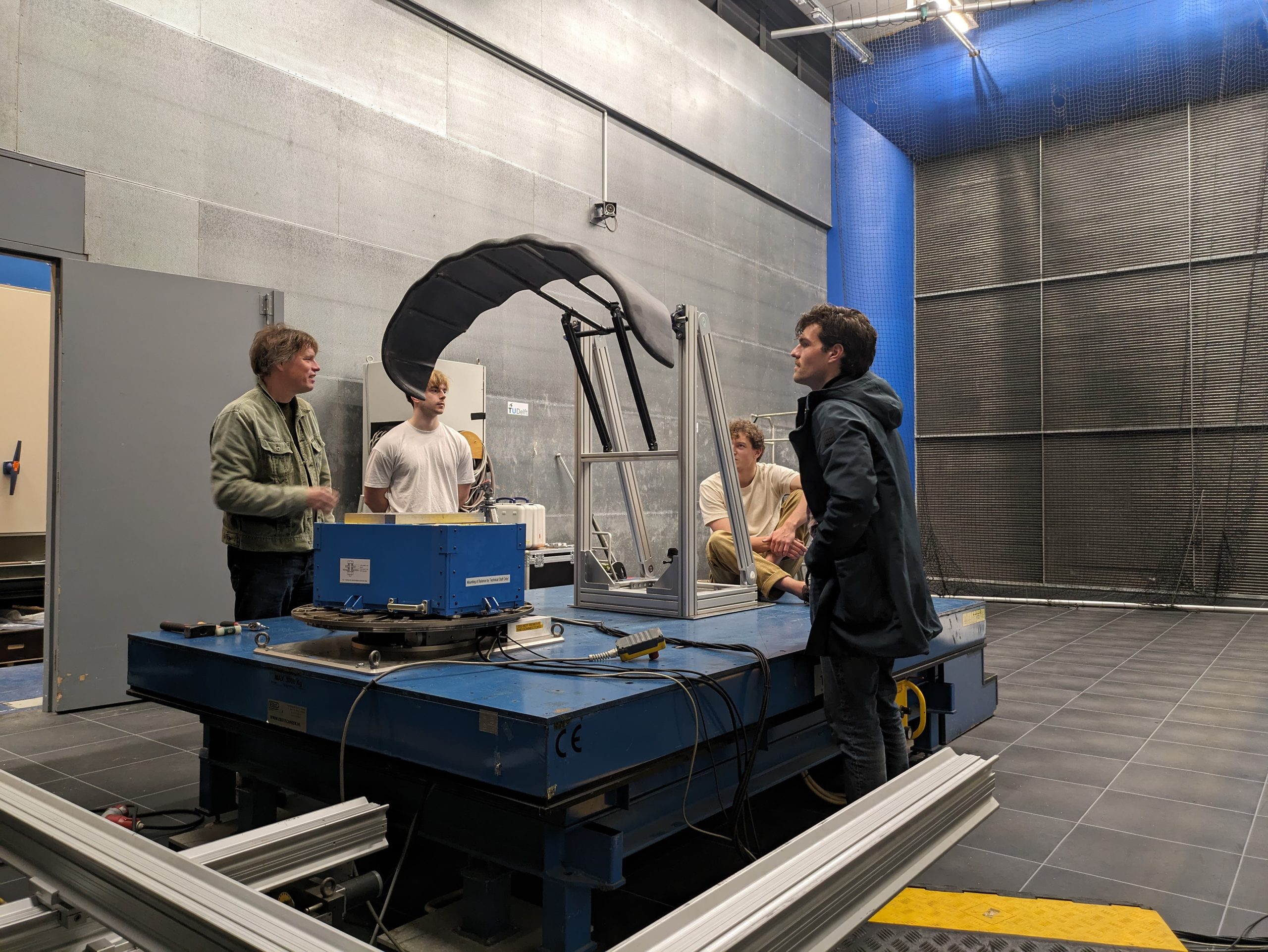
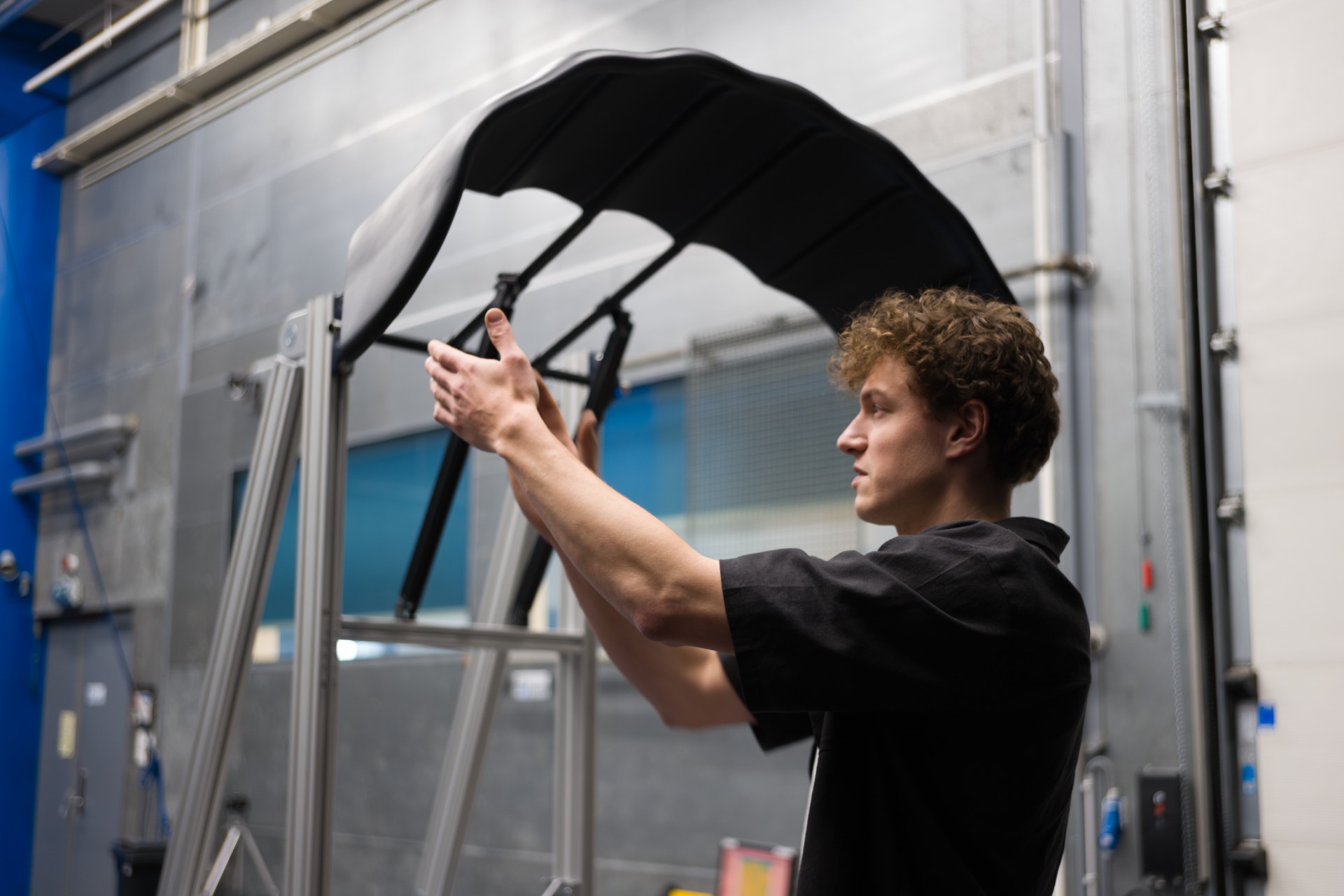
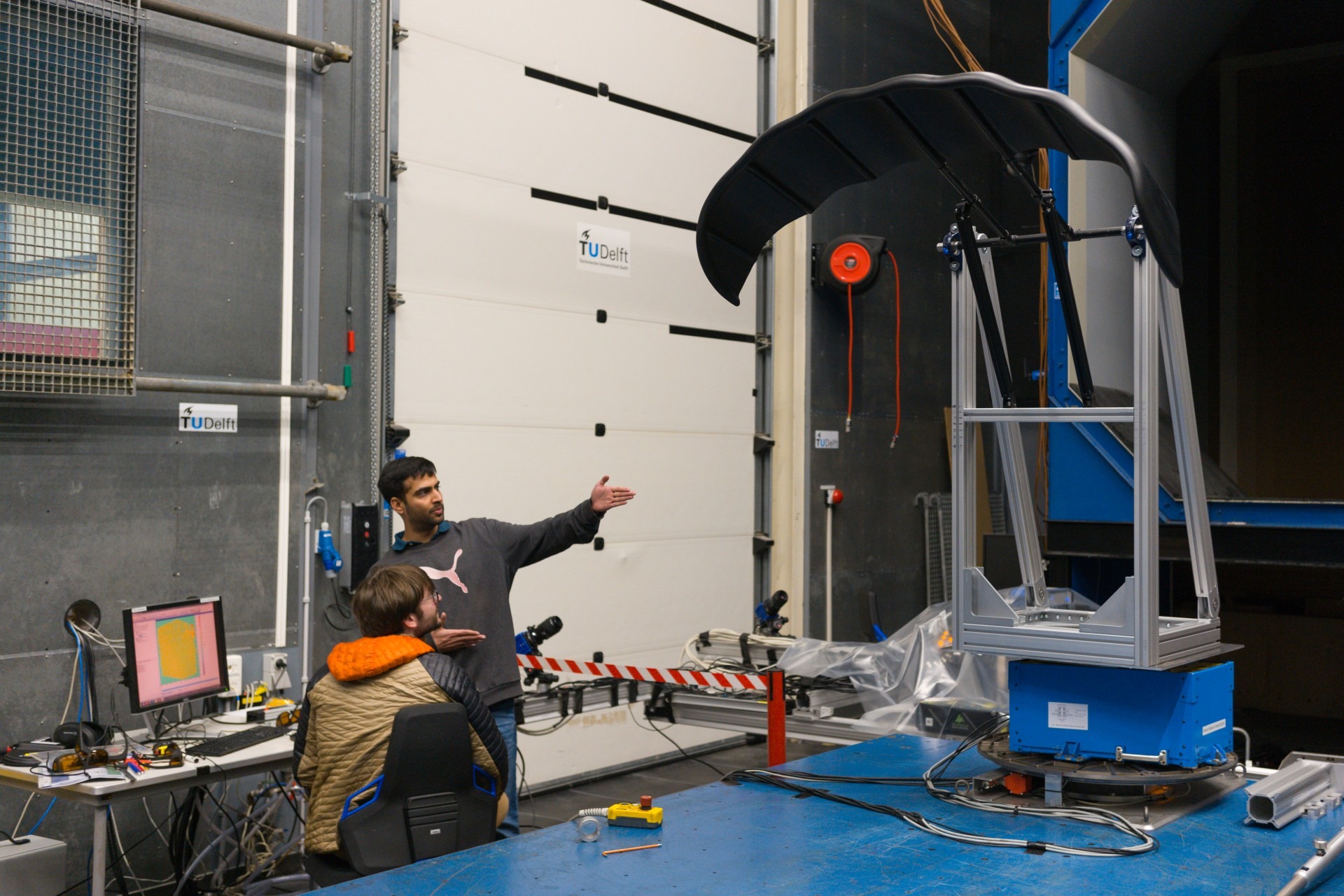
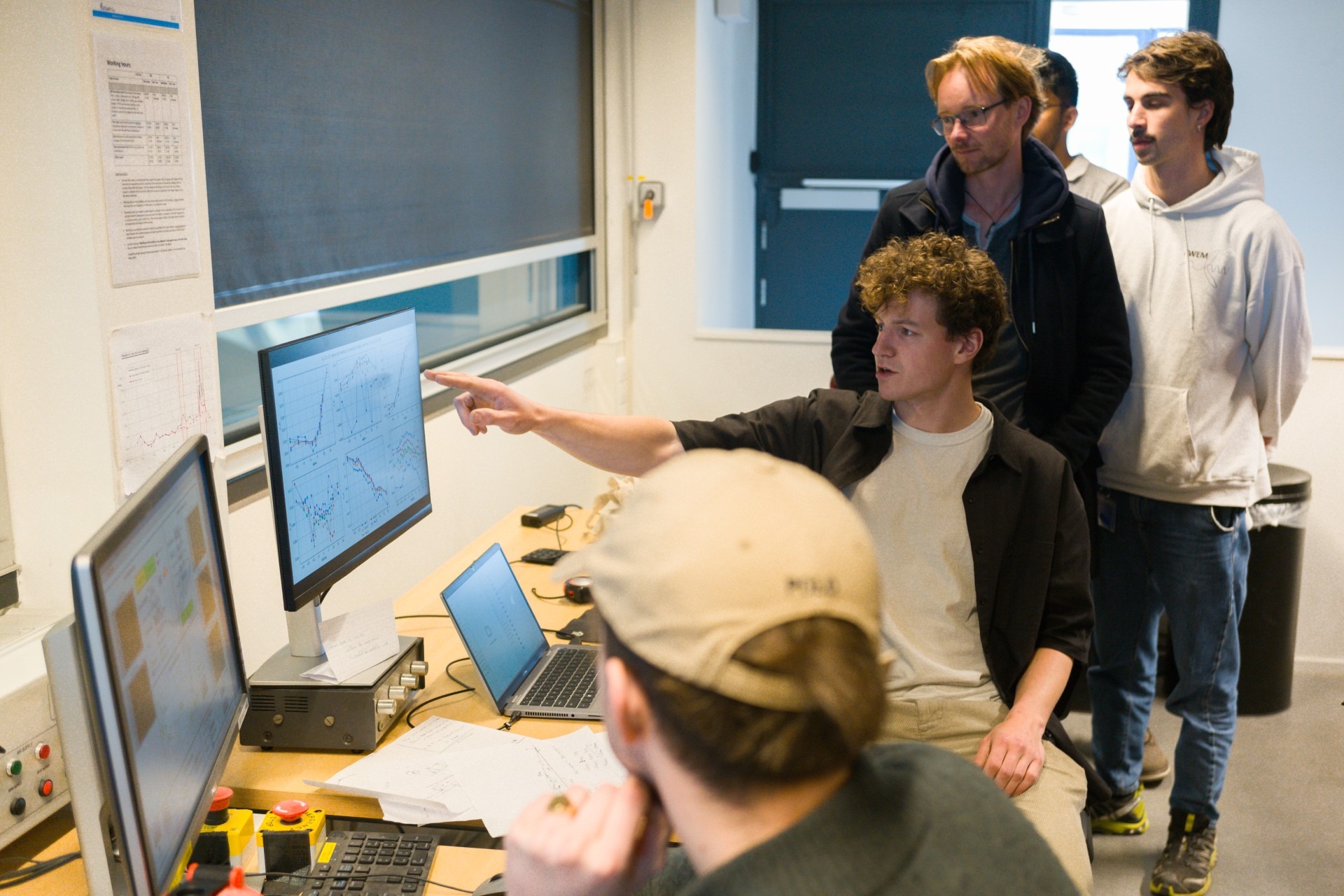
Still, not all the measurements have been processed yet. PIV (Particle Image Velocimetry) is a technique using helium bubbles, lasers and multiple cameras that captures the airflow around the model in unprecedented detail. But this requires so much computing power that its results are still some time away.
How will this experiment help scale up power kites? “We are working on this,” Poland says. “The simulation programme does not give designs for kites, but it can test new designs without having to make a huge prototype.”
Do you have a question or comment about this article?
j.w.wassink@tudelft.nl

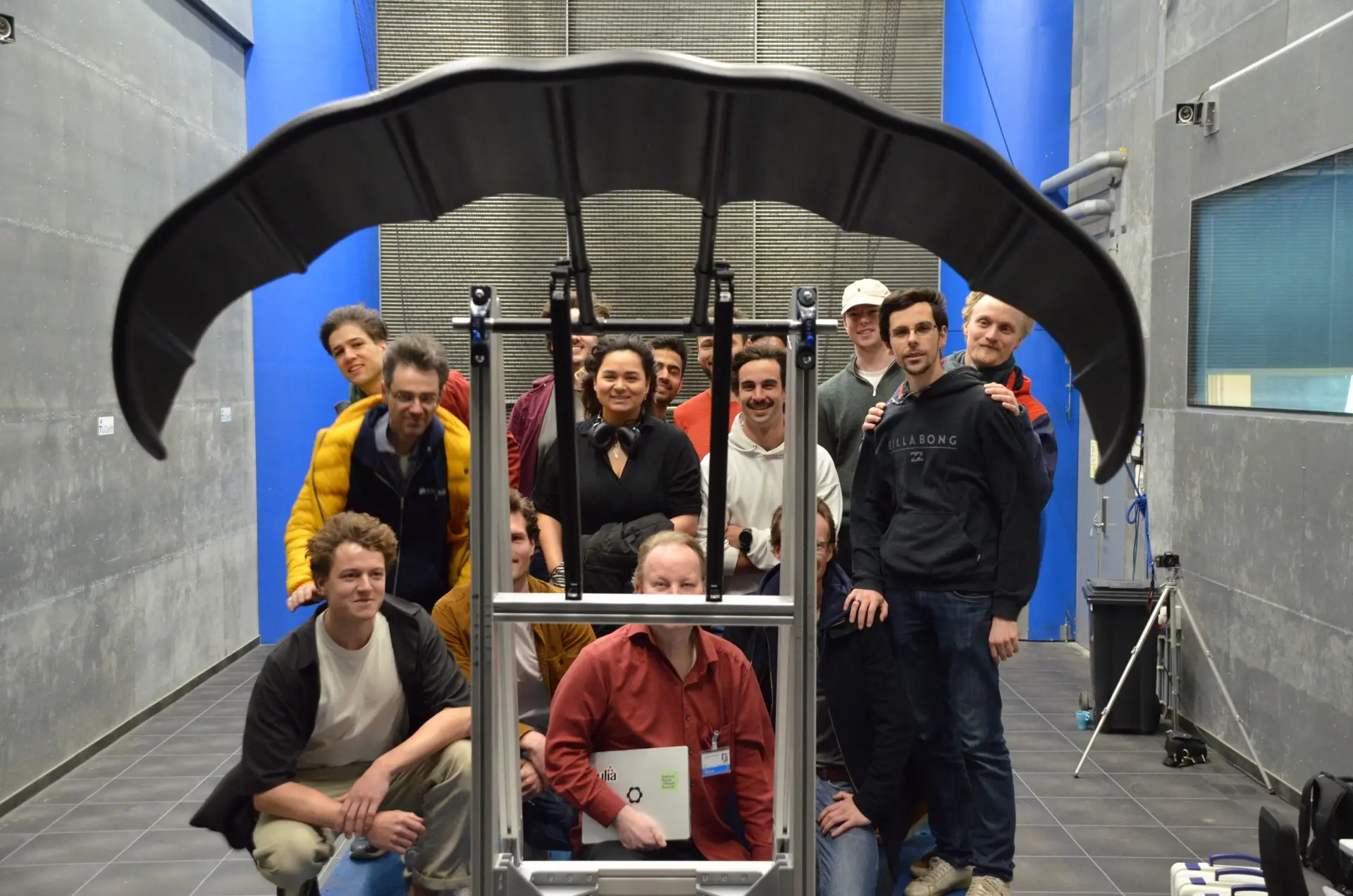
Comments are closed.